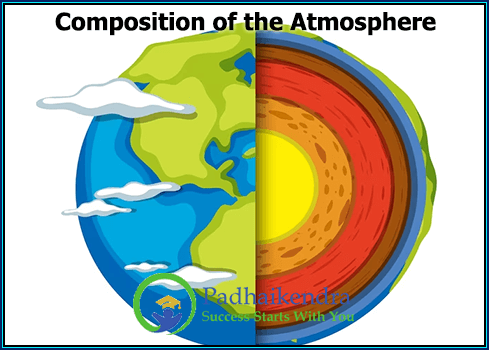The Earth’s atmosphere is composed of several gases and suspended particles. The primary gases include nitrogen (78%), oxygen (21%), and argon (0.9%). The remaining gases, which constitute less than 0.1% of the atmosphere, include carbon dioxide, neon, helium, methane, krypton, hydrogen, and xenon. Water vapour and ozone are also present in small amounts. Suspended particles in the atmosphere include dust, smoke, and salt.
The composition of the atmosphere is critical to life on Earth, as it provides the necessary gases for respiration and photosynthesis. Nitrogen and oxygen are both necessary for respiration, while carbon dioxide is necessary for photosynthesis. Water vapor, though a minor component, is also essential for life as it provides the necessary moisture for plant growth and regulates the Earth’s temperature through the greenhouse effect. Ozone, though present in small amounts, is also critical as it absorbs harmful ultraviolet radiation from the sun.
Overall, the composition of the atmosphere has remained relatively stable over time, with minor fluctuations due to natural phenomena such as volcanic activity and human activities such as industrialization and deforestation. However, the increasing concentrations of greenhouse gases, particularly carbon dioxide, due to human activities, are leading to significant changes in the Earth’s climate, including global warming and climate change.





